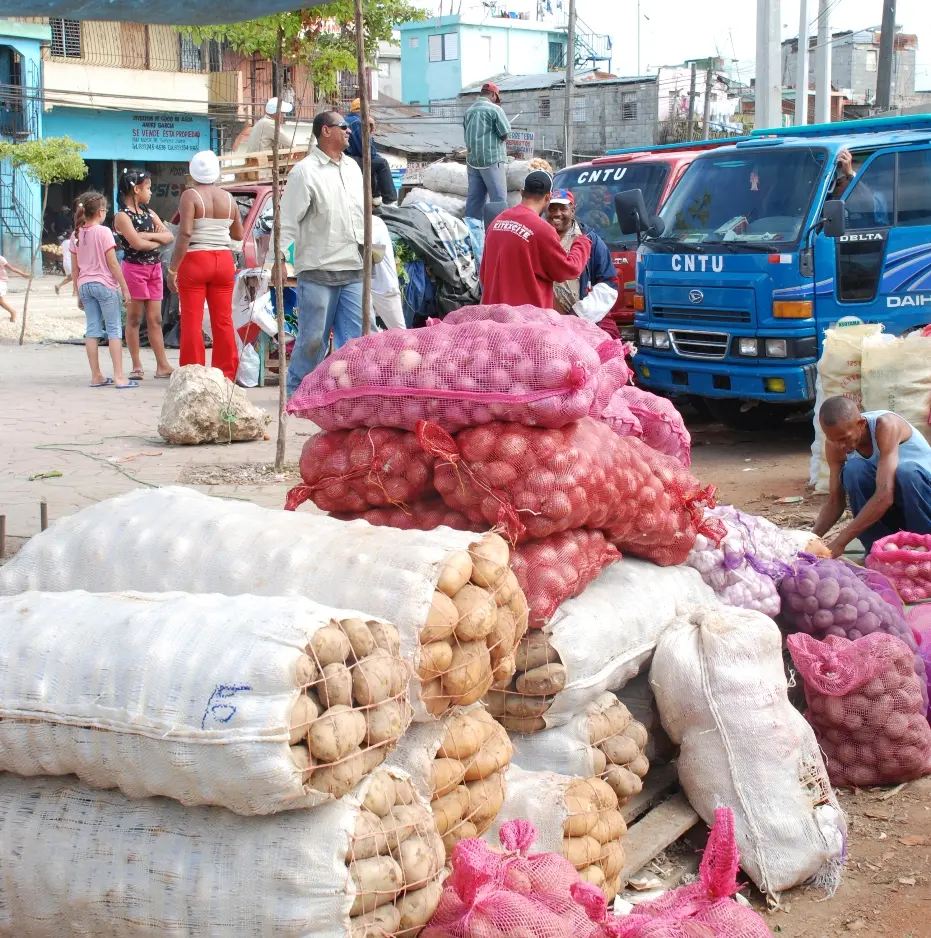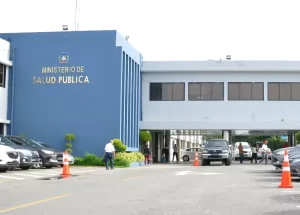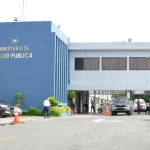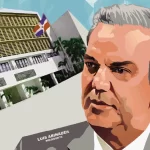Prices of rice, sugar, onions and potatoes have risen, according to traders

Iván García: When the figures of the Central Bank say that the economy grew zero, we know that it is -10%.
The president of the Dominican Federation of Merchants assured that when the numbers of the Central Bank say that the Gross Domestic Product had zero growth, this sector knows that it had a -10% growth.
Engineer Iván de Jesús García explained that the Federation he presides over has 432 Associations spread throughout the Dominican Republic. These, in turn, have 61,920 members, which carry out all the country’s commerce activities.
García defined the Federación Dominicana de Comerciantes as the most important business association in the country because it includes importers, spare parts stores, supply stores, supermarkets, many of the grocery stores affiliated to the Tarjeta Supérate, fabric, household appliance and furniture stores, pharmacies, hardware stores, and government suppliers.
Central American and DR government agencies sign an agreement to defend consumers.
Interviewed by Héctor Herrera Cabral in the program D’AGENDA, which is broadcast every Sunday on Telesistema channel 11 and TV Quisqueya for the United States, the commercial leader said that all the commerce is represented in the Federation, and that is what gives him the quality to be able to speak on behalf of the organized business, and of the different sectors that are grouped in the Federation.
Regarding the inflation levels reported by the Central Bank, Ivan Garcia recalled that the institution uses the annualized method, in this case, from May 2022 to the same month of this year. For that reason, those numbers are accurate.
“We all know that since November 2021, the Central Bank put the brakes on the economy reaching a monetary policy rate of 8. 5% which led commercial banks to offer us rates to trade of up to 18%, and consumer loans between 22 and 30%, this affected that in sectors, for example construction which is one of the most dynamic that the country has, its growth was practically zero during the last year, that is, when the numbers of the Central Bank say it is zero, we know, those of us who are in the hardware store, that it is -10%,” he reiterated.
He added that “Then, the economy slowed down, the inflation target was achieved because of that slowdown in the economy, and there is already a moment, such as the last three months, in which sales have fallen between 8 and 11% with respect to the same period last year, which must be dynamized.”
“And, obligatorily, they had to release the brake and step on the accelerator a little and make available 34 billion pesos of the legal reserve that the banks have to be lent at a rate of 9%,” he pointed out.
He warned that the merchants want that 9% to reach the micro, small, and medium merchants and not to remain among the leading friends of the banks in the Dominican Republic.
García suggested to the Central Bank that of the 34 billion pesos that it has liberalized, it allocates five billion to Promipyme at a rate of 4 to 6% so that this institution can place them at 10 or 12% to the Mipymes of the commerce sector.
“That would do a great service, obviously, first to the government, second to Promipyme, and third, that we are the first, to the country’s MSMEs, because the money that goes to Promipyme if we are sure that they are dedicated to the country’s MSMEs, and in this way thousands and thousands of small businessmen and businesswomen could benefit with those funds released at 9%.
He reiterated his request to the Central Bank to contemplate the possibility of injecting new resources within two months when it evaluates the success of the 34 billion recently released.
“Obviously since they release those funds, come the privileged clients who are the ones who keep the great majority, because they have an extraordinary solvency index, but who does not have it that way, because they have always been nourished by cheap funds, and they restructure their own debts, and they will always be successful companies,” he criticized.
García says there are increases in rice, sugar, onions, and potatoes, but flour prices have been reduced.
Iván García reported that rice, sugar, onions, potatoes, and black beans have experienced price increases, while flour prices have been reduced considerably.
The president of the Dominican Federation of Traders asked the Minister of Industry and Commerce, Ito Bisonó, and the director of Proconsumidor Eddy Alcántara to check what is happening with the price of sugar since the 125-pound sack went from RD$2,985.00 to 3,600.00 pesos, which implies that the increase has reached 15%. It is necessary to remember that the only products subject to price control in the country are fuel and sugar.
Without these prices being set by the State, then when the cost of sugar skyrockets, which we do not understand why, the people need an explanation, and so do we, so also refined sugar is being marketed at RD$3,600.00, when the 125-pound sack was being sold at between 3,200 and 3,300 pesos.
“The same thing is happening with the price of onion, which we were selling per pound at 16 pesos, and now it is between 24 and 28 pesos, that is, the sack has gone from 800 pesos to RD$1,400.00, which implies that the consumer will have to buy it again between 40 and 45 pesos,” he explained.
Ivan Garcia said the same situation occurred with the potato several days ago. A kilo was sold at 35 pesos and currently costs RD$50.00.
“We are talking that the pound, wholesale costs 24 pesos, but to the detail, we have to add 10 or 20% that the owners of the colmados and supermarkets earn in the operations,” he clarified while being interviewed in the program D’AGENDA.
Another product that has increased in price is the black bean which, from 36 pesos a pound, has gone to 42; pints have remained at the same price, while the red beans have dropped from 58 pesos a pound to RD$52.
“The rice that we were selling between RD$2,900.00 and 3,100 pesos, the selection of 125 pounds is at RD$3,300.00, which implies that it increased by 10%; we were always informing people that said product cost between 24 and 25 pesos a pound, now we have to add two pesos.
However, he clarified that the flour, which is the raw material to make bread and pasta, was reduced from RD$2,500.00 per sack to 2,100 pesos, which is why he demanded that the prices of its derivatives be decreased because they were increased when the cost of flour went up.

Iván García criticizes banks for charging up to 8% to businesses for credit card transactions and complains about DGII treatment.
The Dominican Federation of Merchants president, Iván García, complained about the high commissions charged by the companies CardNet and VisaNet to the commerce for the transactions made with credit cards, which amount to up to 8%.
García also criticized that the General Directorate of Internal Taxes DGII has not invited organized commerce for the knowledge, submission, and approval of the law that creates electronic invoicing.
“Gentlemen, here there are commerce that still the banks, in intermediation, earn you 5, 6, 7, and up to 8% in each transaction that is made in those businesses, then those rates have to be significantly reduced because the banks created two companies that are their own, which are the intermediaries between the cardholders and the bank, and there are sectors here that are only giving you 1%, however to the small and medium supermarkets that we represent 26% of the sales of the whole country they charge us the percentage indicated above,” he lamented.
He said that these large chains that are treated with privileges by these credit card companies transact only 16% of the sales in the country, 26% of the supermarkets of the Dominican market, and the other 50% is through the colmados that are already receiving VeriFone, so the 400 and up to 500% difference in the rates charged to the Mipymes of the commerce sector, compared to the large chains, is not explained.
“The companies that are owned by the banks, which are CardNet and VisaNet, must be restructured because it is impossible for small, micro, and medium commerce, and everyone knows that here debit cards are being used more than credit cards, that is, they charge a commission for money that the customer already has.
Criticizes DGII treatment of organized commerce
Iván García criticized the treatment given by the director of the Directorate General of Internal Taxes by excluding organized commerce in the discussion of the recently approved Electronic Invoice law.
“At no time did the director general of Internal Taxes invite the Dominican Federation of Merchants to discuss the issue of the Electronic Invoice; we even sent a letter to the president of the Finance Commission of the Chamber of Deputies to listen to representatives of commerce, and his response to some merchant congressmen who raised the issue was that the director of the DGII had already reached a consensus with me, which was not true,” he lamented.
He recalled that the Dominican Federation of Merchants proposed electronic invoicing with longer terms for micro, small, and medium-sized merchants when the fiscal printers did not work.
“Here, the terms were completely different than in Chile; in the Dominican Republic, they are giving three years, while in the South American country they are granting between seven and ten years, and they created a figure, which they have it internally in the DGII, which are the large taxpayers of the Peoples,” clarified the business leader.
He maintained that through this modality in the small towns, the most extensive commerce, even if it is a Mipyme concerning a big city, for the Internal Taxes is a significant taxpayer.

















